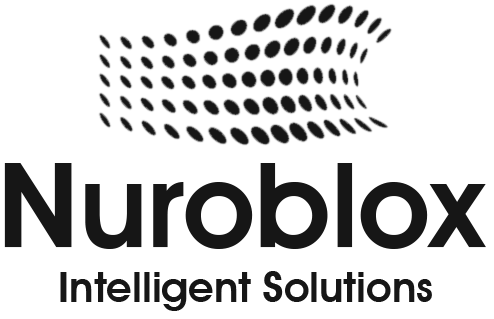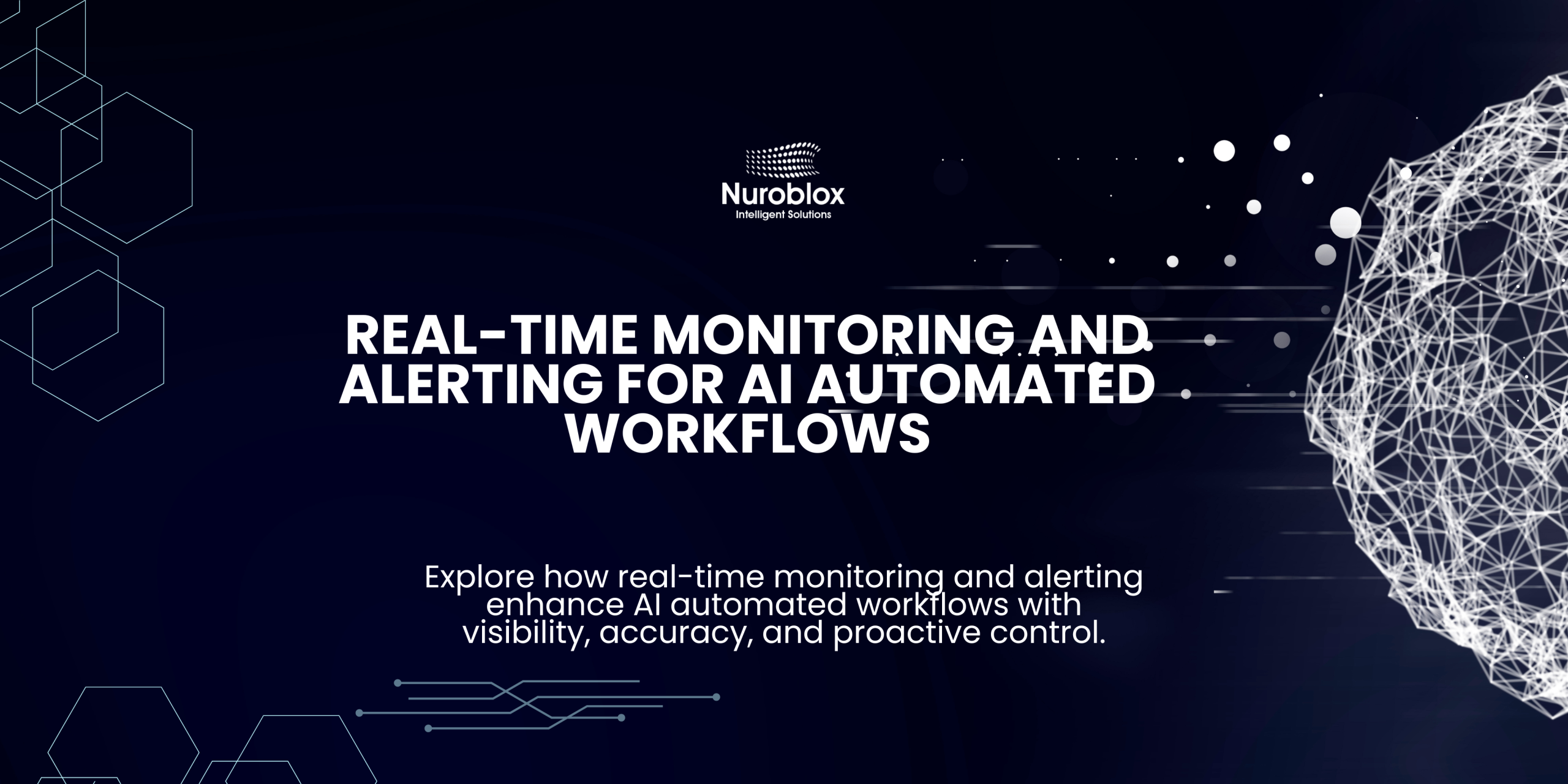Real-time Monitoring and Alerting for AI Automated Workflows
In today’s rapidly evolving business landscape, organizations are increasingly deploying AI-powered automation to streamline operations and reduce costs. However, without proper monitoring and alerting systems, even the most sophisticated AI automated workflows can fail silently, leading to data inconsistencies, missed transactions, and damaged customer trust. Real-time monitoring and alerting for AI automated workflows has become essential infrastructure for enterprises relying on intelligent automation to drive competitive advantage.
This comprehensive guide explores everything you need to know about implementing effective real-time monitoring and alerting for AI automated workflows, from core concepts to practical implementation strategies that will help you maintain system reliability, optimize performance, and detect issues before they impact your business.
Understanding Real-time Monitoring in AI Workflows
Real-time monitoring represents the continuous observation and measurement of your AI-powered automation systems as they execute business processes. Unlike traditional batch monitoring that reviews logs after processes complete, real-time monitoring and alerting for AI automated workflows provides instantaneous visibility into workflow execution, performance metrics, and system health.
The fundamental purpose of real-time monitoring in AI workflows extends beyond simple status checks. It encompasses tracking workflow execution metrics, monitoring resource utilization, validating data quality, measuring business outcomes, and ensuring compliance with organizational policies. Modern real-time monitoring systems for automated workflows integrate with your existing infrastructure while maintaining the speed and accuracy required for mission-critical operations.
Effective real-time monitoring and alerting for AI automated workflows captures metrics at multiple layers including workflow orchestration layer, AI decision-making components, data processing stages, and system infrastructure. This multi-layered approach ensures comprehensive visibility across your entire automation ecosystem.
Key Metrics to Monitor
Understanding which metrics matter most forms the foundation of any effective monitoring strategy. Here are the critical metrics organizations should track:
- Workflow execution time – Measures how long workflows take to complete, helping identify performance bottlenecks
- Success and failure rates – Tracks percentage of workflows completing successfully versus encountering errors
- AI confidence scores – Monitors the certainty level of AI model predictions and decisions
- Data quality metrics – Ensures incoming data meets quality standards before processing
- Resource utilization – Tracks CPU, memory, and storage consumption during workflow execution
- Error categorization – Classifies types of failures to identify patterns and root causes
- SLA compliance – Measures whether workflows meet defined service level agreements
- Cost per transaction – Monitors operational expenses to identify efficiency opportunities
The Role of Intelligent Alerting Systems
Alerting transforms raw monitoring data into actionable intelligence by notifying relevant teams when specific conditions occur. Intelligent alerting systems for AI workflows go beyond simple threshold-based triggers, incorporating contextual analysis and machine learning to distinguish between genuine issues and normal operational variations.
Real-time monitoring and alerting for AI automated workflows must balance alert volume with signal quality. Too many false alarms lead to alert fatigue, while insufficient alerting masks critical problems. Advanced alerting systems use correlation analysis, baseline modeling, and anomaly detection to determine when human intervention is truly necessary.
Effective alert management requires defining alert severity levels, establishing escalation procedures, and routing notifications to appropriate teams based on the nature and impact of issues. Integration with incident management platforms ensures alerts trigger rapid response workflows.
Types of Alerts for Automated Workflows
Different alert categories serve distinct purposes within your automation ecosystem –
- Performance alerts – Triggered when workflow execution time exceeds defined thresholds or degrades from baseline performance
- Error alerts – Notify teams when workflows fail or encounter unrecoverable exceptions
- Anomaly alerts – Detect unusual patterns in workflow behavior that may indicate underlying problems
- Data quality alerts – Flag when input data fails validation rules or quality standards
- Compliance alerts – Trigger when workflows violate regulatory requirements or policy constraints
- Resource alerts – Warn when system resources approach critical levels
- AI confidence alerts – Alert when AI models generate predictions below acceptable confidence thresholds
- Business logic alerts – Notify when workflow outputs violate expected business rules or constraints
Best Practices for Implementing Real-time Monitoring
Building robust real-time monitoring and alerting for AI automated workflows requires following established best practices that organizations in the industry have proven effective.
Start with Clear Objectives
Before implementing any monitoring system, define specific goals such as reducing undetected errors by 95%, improving mean time to resolution by 50%, or ensuring 99.9% workflow availability. Clear objectives guide technology selection and help measure success of your monitoring initiatives.
Design Comprehensive Dashboards
Effective dashboards for real-time monitoring and alerting for AI automated workflows provide different views for different roles like executives seeing high-level KPIs, operations teams viewing detailed metrics, and developers accessing technical performance data. Multi-tiered dashboards accommodate stakeholder needs while maintaining visual clarity.
Dashboard best practices include displaying current state alongside historical trends, implementing drill-down capabilities for detailed analysis, using visual indicators like traffic lights for quick status assessment, and ensuring mobile accessibility for on-the-go monitoring.
Establish Alert Thresholds Intelligently
Static thresholds often fail to account for seasonal variations, business cycle changes, and evolving system behavior. Implement dynamic thresholds using machine learning models that establish baseline patterns and adjust automatically based on historical data. Real-time monitoring and alerting for AI automated workflows should incorporate contextual factors like time of day, day of week, and business events when evaluating alert conditions.
Implement Alert Fatigue Management
Alert fatigue destroys the effectiveness of any monitoring program by causing teams to ignore genuine critical issues. Reduce noise through intelligent alert suppression, alert correlation that groups related alerts, and smart routing that ensures only relevant stakeholders receive specific alerts. Regular alert audit processes help identify and eliminate alerts with consistently high false positive rates.
Essential Tools and Technologies
The landscape of monitoring and observability platforms has evolved significantly to address the unique challenges of AI-powered automation.
Observability Platforms
Modern observability platforms provide integrated monitoring, logging, tracing, and alerting capabilities specifically designed for distributed systems like automated workflows. These platforms aggregate data from multiple sources, correlate information across system layers, and provide context for faster issue resolution. Real-time monitoring and alerting for AI automated workflows benefits from platforms offering native support for AI workloads and workflow orchestration tools.
Workflow-Specific Monitoring Solutions
Several solutions specifically target workflow automation environments, offering pre-built monitoring templates for popular RPA and intelligent automation platforms. These specialized tools understand workflow-specific metrics and provide out-of-box alerts for common failure scenarios.
Custom Monitoring Infrastructure
Many organizations supplement commercial platforms with custom monitoring solutions built on open-source technologies like Prometheus, Grafana, and ELK Stack, allowing fine-grained control and customization for specific automation scenarios.
Implementing Real-time Monitoring and Alerting
Successful implementation requires systematic planning and careful attention to integration challenges.
Phase 1 – Assessment and Planning
Begin by documenting all workflows requiring monitoring, identifying critical workflows that warrant priority attention, and listing current monitoring gaps. Define monitoring requirements including metric collection frequency, alert latency requirements, retention periods, and compliance obligations. Real-time monitoring and alerting for AI automated workflows should address both technical and business perspectives during planning.
Phase 2 – Architecture and Design
Design monitoring architecture considering data volume, latency requirements, scalability needs, and integration complexity. Decide on centralized versus distributed monitoring, choose data collection methods (agent-based, agentless, or hybrid), and plan for data storage and retention. Integration with incident management systems should be part of architectural design to ensure alerts trigger appropriate responses.
Phase 3 – Tool Selection and Configuration
Evaluate candidate platforms against defined requirements, considering factors like cost, ease of use, learning curve, and integration capabilities. Real-time monitoring and alerting for AI automated workflows requires tools supporting your specific automation technologies and infrastructure. Pilot with non-critical workflows before enterprise-wide rollout.
Phase 4 – Metric Collection Setup
Configure agents or connectors to collect metrics from workflow execution engines, AI models, data sources, and infrastructure components. Establish consistent naming conventions and tagging strategies for metrics to facilitate searching, filtering, and aggregation. Implement data quality checks to ensure collected metrics remain accurate and reliable.
Phase 5 – Alert Configuration and Tuning
Define alert thresholds based on historical performance data and business requirements. Start with conservative thresholds to minimize false positives while capturing genuine issues. Real-time monitoring and alerting for AI automated workflows should include escalation procedures and clear ownership assignments for different alert categories.
Phase 6 – Testing and Validation
Thoroughly test monitoring and alerting systems before production deployment through controlled failure scenarios, alert delivery verification, and dashboard functionality testing. Validate that alerts trigger appropriately and notifications reach intended recipients through correct channels.

Real-time monitoring and alerting implementations often encounter predictable obstacles that proactive planning can mitigate.
Handling Alert Fatigue
Alert fatigue remains the most common failure point in monitoring programs. Combat this through intelligent alert correlation, implementing alert thresholds that adapt to operational context, and regular elimination of low-value alerts. Real-time monitoring and alerting for AI automated workflows benefits from dedicated alert management practices and periodic alert quality reviews.
Managing Data Volume
Collecting metrics from high-volume automated processes generates enormous data quantities that can overwhelm storage and analysis capabilities. Implement aggressive data filtering to collect only meaningful metrics, use time-series databases optimized for metric storage, and establish data retention policies that balance historical analysis needs with cost management.
Ensuring Monitoring Reliability
Monitoring systems themselves require monitoring, if your monitoring infrastructure fails, you lose visibility precisely when needed most. Design for redundancy, implement health checks for monitoring systems, and maintain fallback alerting mechanisms. Real-time monitoring and alerting for AI automated workflows demands that monitoring infrastructure matches or exceeds the reliability of monitored systems.
Integration Complexity
Connecting monitoring tools with multiple automation platforms and infrastructure services presents significant integration challenges. Use integration platforms that support workflow automation tools, establish clear data formats and API contracts, and implement robust error handling for integration failures.
What role does AI play in monitoring and alerting?
AI enhances monitoring through anomaly detection, predictive alerting, intelligent correlation, and automated remediation. Machine learning models identify subtle patterns human analysts might miss, enabling proactive alerts before issues impact operations.
Featured Snippet Opportunities
Definition Box – Real-time monitoring and alerting for AI automated workflows represents the continuous observation and automated notification system that tracks workflow execution, performance metrics, and system health, immediately alerting relevant teams when predefined conditions occur.
Key Benefits Table –
| Benefit | Impact |
| Early Problem Detection | Prevents minor issues from becoming critical failures |
| Faster Response Times | Enables incident teams to act before business impact escalates |
| Data-Driven Optimization | Historical metrics guide workflow improvement efforts |
| Compliance Assurance | Automated verification that workflows meet regulatory requirements |
| Cost Reduction | Identifies inefficiencies enabling significant savings |
Conclusion
Real-time monitoring and alerting for AI automated workflows has evolved from a nice-to-have feature to critical infrastructure for organizations leveraging intelligent automation. By implementing comprehensive monitoring systems, intelligent alerting strategies, and proven best practices, enterprises can maximize workflow reliability, accelerate incident response, and unlock the full potential of their automation investments.
The journey toward effective real-time monitoring and alerting for AI automated workflows begins with clear objectives and systematic planning, continues through careful tool selection and implementation, and matures through continuous optimization and adaptation. Organizations that prioritize monitoring and alerting capabilities gain competitive advantages through higher uptime, faster problem resolution, and data-driven operational decisions.
Start your real-time monitoring and alerting for AI automated workflows implementation today by assessing your current monitoring gaps, defining clear objectives, and selecting tools that align with your automation technology stack. The investment in robust monitoring pays dividends through preventing failures, faster recovery, and continuous improvement of your automation processes.


